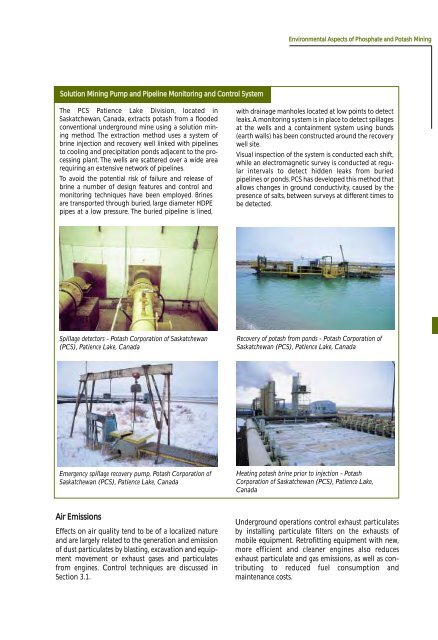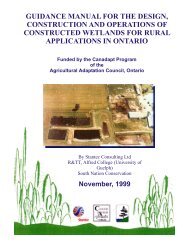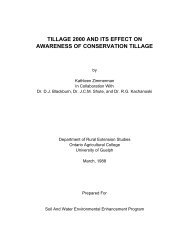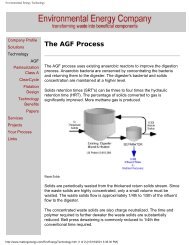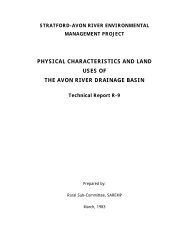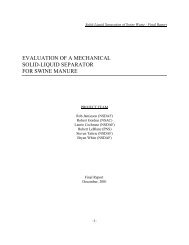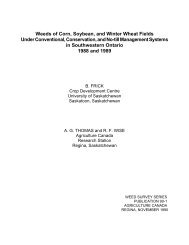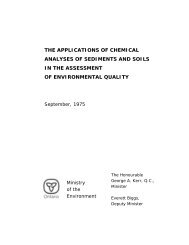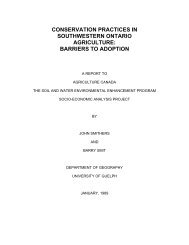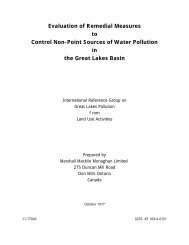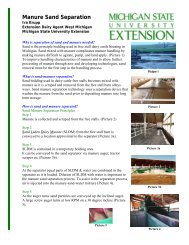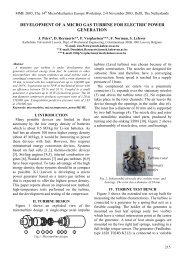Environmental Aspects of Phosphate and Potash Mining United ...
Environmental Aspects of Phosphate and Potash Mining United ...
Environmental Aspects of Phosphate and Potash Mining United ...
You also want an ePaper? Increase the reach of your titles
YUMPU automatically turns print PDFs into web optimized ePapers that Google loves.
<strong>Environmental</strong> <strong>Aspects</strong> <strong>of</strong> <strong>Phosphate</strong> <strong>and</strong> <strong>Potash</strong> <strong>Mining</strong><br />
Solution <strong>Mining</strong> Pump <strong>and</strong> Pipeline Monitoring <strong>and</strong> Control System<br />
The PCS Patience Lake Division, located in<br />
Saskatchewan, Canada, extracts potash from a flooded<br />
conventional underground mine using a solution mining<br />
method. The extraction method uses a system <strong>of</strong><br />
brine injection <strong>and</strong> recovery well linked with pipelines<br />
to cooling <strong>and</strong> precipitation ponds adjacent to the processing<br />
plant. The wells are scattered over a wide area<br />
requiring an extensive network <strong>of</strong> pipelines.<br />
To avoid the potential risk <strong>of</strong> failure <strong>and</strong> release <strong>of</strong><br />
brine a number <strong>of</strong> design features <strong>and</strong> control <strong>and</strong><br />
monitoring techniques have been employed. Brines<br />
are transported through buried, large diameter HDPE<br />
pipes at a low pressure. The buried pipeline is lined,<br />
with drainage manholes located at low points to detect<br />
leaks. A monitoring system is in place to detect spillages<br />
at the wells <strong>and</strong> a containment system using bunds<br />
(earth walls) has been constructed around the recovery<br />
well site.<br />
Visual inspection <strong>of</strong> the system is conducted each shift,<br />
while an electromagnetic survey is conducted at regular<br />
intervals to detect hidden leaks from buried<br />
pipelines or ponds. PCS has developed this method that<br />
allows changes in ground conductivity, caused by the<br />
presence <strong>of</strong> salts, between surveys at different times to<br />
be detected.<br />
Spillage detectors - <strong>Potash</strong> Corporation <strong>of</strong> Saskatchewan<br />
(PCS), Patience Lake, Canada<br />
Recovery <strong>of</strong> potash from ponds - <strong>Potash</strong> Corporation <strong>of</strong><br />
Saskatchewan (PCS), Patience Lake, Canada<br />
Emergency spillage recovery pump, <strong>Potash</strong> Corporation <strong>of</strong><br />
Saskatchewan (PCS), Patience Lake, Canada<br />
Heating potash brine prior to injection - <strong>Potash</strong><br />
Corporation <strong>of</strong> Saskatchewan (PCS), Patience Lake,<br />
Canada<br />
Air Emissions<br />
Effects on air quality tend to be <strong>of</strong> a localized nature<br />
<strong>and</strong> are largely related to the generation <strong>and</strong> emission<br />
<strong>of</strong> dust particulates by blasting, excavation <strong>and</strong> equipment<br />
movement or exhaust gases <strong>and</strong> particulates<br />
from engines. Control techniques are discussed in<br />
Section 3.1.<br />
Underground operations control exhaust particulates<br />
by installing particulate filters on the exhausts <strong>of</strong><br />
mobile equipment. Retr<strong>of</strong>itting equipment with new,<br />
more efficient <strong>and</strong> cleaner engines also reduces<br />
exhaust particulate <strong>and</strong> gas emissions, as well as contributing<br />
to reduced fuel consumption <strong>and</strong><br />
maintenance costs.


